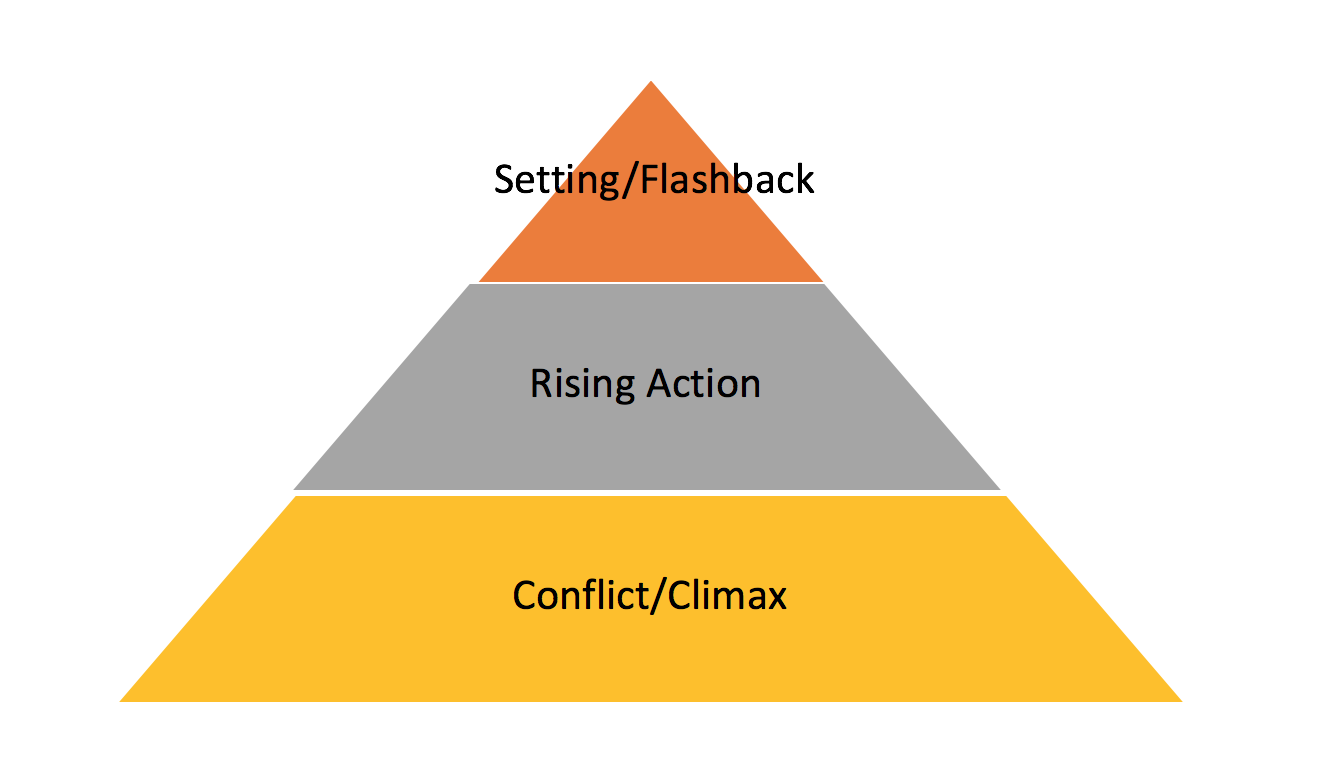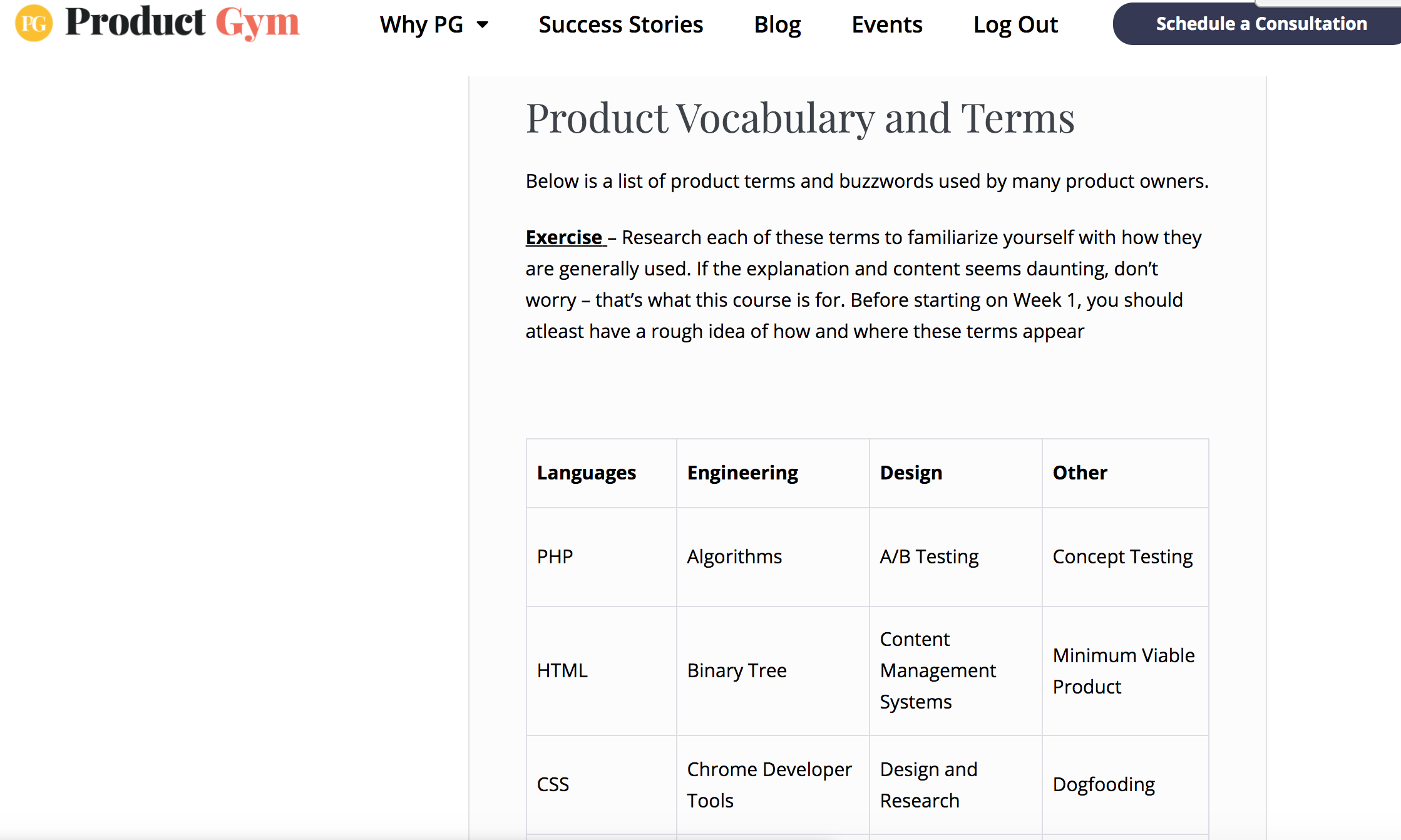You want to land the right Product Manager job. You want companies handing you out offers left and right. But more than any of those things, you want to work at a company that is right for you. After all, there is nothing worse than working for a company that you don’t find inspiring. To land that role at your dream company, you are going to need to know how to market yourself as the ultimate Product Manager. Wondering where to start? Here’s the process.
Frame Your Story
“I have x years of experience in product management, I started at {company}, where I was doing {something related to product management}, I left because of {this reason}”. The point that you are trying to communicate, is that you have a story in how you transitioned into Product Management. To tell this story, you must build the framework of your story first.
You are the hero of your own story. This is especially true when learning how to market yourself. When you land your Product Manager role, you are consistently going to hear this statement: Product Managers tell stories. To become a Product Manager, you need to learn to tell your story.
Use this framework to craft your story:

Step 1: Setting/Flashback
Set the scene by telling the recruiter the names of the companies that you worked at. Give them a general overview of your most significant projects.
Make it comprehensive, but not exhaustive, since you will get into more details in the next two sections. Note that in this section, you’re answering the what, when, and where of your professional background.

Setting/Flashback Template:
“I’m here now. I started {x} years ago when I was at {Company A}, mainly working on {Greatest/most important project you worked on}, supporting {the business division that you were working with}.
I realized that I really enjoyed {the kind of function/work/business division you were passionate about at the time} and decided to pursue my passion at {Company B} as I saw more opportunity for growth there.”
Slowly build the story to how you got where you are today.
Step 2: Rising Action
At this stage of the “how to market yourself” strategy, go backward and talk about how you are currently doing product-related tasks and transition into how you got your current role.
Then, talk about previous positions until you’ve exhausted any historic product relevancy. This section of your pitch focuses on answering the how. You should also include a simple KPI to indicate the success of your product. This way, you’ll show your interviewer that you have proven success at delivering products.
Rising Action Template:
“I’m currently working on {your current and/or most relevant project}, supporting {business division}. I work in a cross-functional team, which consists of {any kind of people, e.g., engineers, QA testers, business analysts, scrum master}, and orchestrate the product’s development end-to-end.
My responsibilities include interviewing my clients and understanding their needs, documenting what clients said and sharing it with the rest of the team, and following agile principles to organize meetings to discuss requirements and check progress.
We rolled out the first version of our product {time when the first version was released to customers}, and data coming from the customer suggests that {a key KPI} increased by {percentage or any other relevant unit of measurement}.”
Don’t give too much company context, and don’t speak too much on technical jargon. Focus on yourself and your role. You have to sound like a product manager and you have to use product vocabulary. So what does that mean?
Much of product vocabulary can be found online: check out this blog post on product management jargon to get started. Find a specific example that you can apply your background and professional history too.
Please Note:
We know everyone is coming from a different background, and there is no one size fits all solution. If your past experiences were more focused on a specific phase of product development, for instance, business requirements, be sure to add a couple more sentences to this template to demonstrate your experience.
Make sure to establish a breadth of experience to prove that you got experience with the complete product pipeline.
Step 3: The Conflict/Climax
After you’ve given your backstory and built up your experience as a Product Manager, we reach the climax of your professional story, which reveals the reason you are leaving your current company.
Tie this back to your initial pitch and remember, you are the hero, you are the protagonist. This section of the pitch should answer the why.
Conflict/Climax Template:
“While I have learned a tremendous amount and gained incredible skills, I realized that I should be looking for more opportunities to get a chance to work with larger teams and broader projects.
I now have the confidence that I could deliver products, and I believe it’s time for me to expand my horizons.”
As you begin to learn how to market yourself, you’ll need to master talking about who you are in a strategic way. Watch our video on how to answer the “Tell Me About Yourself” question in Product Manager interviews to get started:
Step 4: Get Your Pitch Reviewed by a Professional
You’ve written your story and strategically built a pitch that sells your value as a Product Manager: congratulations! But if you want to go above and beyond to impress the Hiring Manager, take some time to practice and polish your personal pitch with a professional.
An interview coach is the perfect test subject for your key branding materials, like your elevator pitch. Especially if your coach is a Product Manager who’s gone through the gruelling job hunt and landed their dream role on the other side. They’ll be able to assess your pitch from the perspective of the Recruiter and Hiring Manager, and use their experience to help you polish it.
At Product Gym, our interview coaches work with our members to polish their full branding package — including their personal pitch, of course — as the first step of the program. They offer insight, constructive criticism, and tips on how to make your pitch stand out before you start interviewing. And when you’re going through interviews answering the “Tell me about yourself” question, they’re still right there with you. At Product Gym, we help our members break down their interviews, understand what worked and what didn’t in their pitch and answers, and adjust their approach to better present themselves as the ultimate Product Manager hire.
How to Market Yourself: What to Watch Out For
This template should be the story that you should be comfortable with sharing in your first-round interviews.
Does it sound like an elevator pitch to you?
It should, because this template is designed to showcase your previous accomplishments. Make sure to familiarize yourself with your story as much as possible. Your pitch shouldn’t take more than three minutes, and it should cover the main aspects of your Product Manager resume.
Confidence is key here. Product Managers are expected to describe and answer any questions regarding their products confidently.
They need to have the ability to explain complex products in a couple of sentences and answer specific questions in greater detail, if necessary. Successful Product Managers know when to get into detail and when to remain broad.
You should approach your pitch the same way, but the product, in this case, is your professional background. Pitch your product with confidence. Keep in mind that you shouldn’t give too much company context or rely on too much technical jargon. Instead, focus on yourself and your role. You should sound like a Product Manager, and you should use a product vocabulary.
6 Product Manager Terms to Use in Your Story
Product vocabulary relates to the language and phrases used in product management. Here are some of the keywords:
- Stakeholder consensus: If you have worked with multiple people, you have done some kind of stakeholder consensus.
- Customer empathy: Being close to the product’s end users. It could also mean being close to users in general of a product/platform you worked on and having to understand their pain points.
- Cross-functional teams: A group of people with different functional expertise working towards a common goal. In most cases, a cross-functional team consists of a product owner/product manager, business analysts, engineers, data scientists, UI/UX designers.
- Requirements and Documentation: It might sound like a tedious daily routine, but gathering requirements and documenting them is a critical skill that many if not all interviewers are looking for. Make sure that you include terminology related to requirements such as user stories, acceptance criteria, features, and epics.
- Agile/Scrum Rituals: While it’s not imperative for all teams to apply agile or scrum rituals, most interviewers would like to see some kind of daily routine practiced by Product Managers to know that they have a proven method of tracking progress. Daily standups, where members share their progress, impediments, daily goals, or sprint demos, and the team presents its progress to the stakeholders, are some everyday rituals that every interviewer would like to hear about.
- KPIs: KPI stands for key performance indicators, and as the name suggests, these indicators show how the product is doing. Different products have different KPIs, and you should be able to come up with at least two relevant KPIs for your story.
Relate Specific Points in Your Resume
Find a specific example that you can apply to your background and professional history, mix in some product vocabulary, and you’ll start to sound like a Product Manager on these calls. Interviewers will look at your resume and pick specific points for you to elaborate on.
Look at your resume and craft your story.
Then, develop your pitch and have your product vocabulary ready. Here’s an example of the process:
- Let’s think about a specific case.
- Imagine you’re an Email Account Manager applying for a Product Manager role.
- How can you use this product vocabulary specific to your background?
- How is this related to the product at all?
- How do you transition this into product management?
- What’s your reason for leaving?
How to Market Yourself with Keywords: Some Approaches
“Identified key product-marketing opportunities = Led flagship team for brand utilizing our people-based marketing capabilities.”
So you identified an area that could have been utilizing something, but using what? People-based marketing capabilities. Great, you’ve found a product-marketing opportunity — the product that could be the team. So you created the product, which in this case is the team, to market your brand.
It doesn’t specifically have to be a software product, in this case, because you are transitioning.
You are building up the story to the point that you are a Product Manager.
“Managed and maintained partnerships.”
This means you were extremely client-facing and had direct customer interactions, where you were documenting feedback, documenting the customer pain points, and leveraging products and data to hit KPIs.
What are the KPIs? Maximizing revenue. What were the tools used? Email inventory.
“Directly implementing HTML.”
You were working with engineering for the implementation of these products.
“Acted as the lead contact for the director.”
Perhaps that means that you managed other people who come to the director, and you had to balance and prioritize different interests.
Using the right Product Manager terminology can be tough. Here’s a full video tutorial on how to use the right keywords to create the ultimate Product Manager elevator speech:
Terminology Template:
“I worked at {Company}, where I was identifying key product-marketing opportunities.
Here, I managed and maintained partnerships that we had with our current clients, so I was extremely customer-facing and had direct customer interactions with representatives of {client companies} where the core KPI to hit was maximizing revenue.”
Here, you’ve crafted the story of being a Product Manager.
Start by saying, “In my product role, or as a product owner/manager/strategist, I owned {these products}.”
If you’re not comfortable saying that you own products, take a product or project that you can speak naturally and make something that you can break down into detail when you are asked for examples. If you choose a product that is not software or something that you didn’t own completely, that’s fine too.
Pick an area of the product development life-cycle for which you were responsible. Walk the recruiter through precisely what you did. Focus on ideation and discovery. “I did {this}.”
If you can walk through an entire part of the development life-cycle of the product, even better. For the next part of the life-cycle, “I did this for {another product}.” The critical point is to communicate competency and sound like a Product Manager.
Remember to use product vocabulary because many first-round calls are recruiters utilizing a checklist. You must hit these key areas to make the second round.
These keywords are so essential to your pitch and interview that we require all of our members to master them even before starting the Product Gym program. Here’s a sneak peek of our Week 0 homework:

Make the Connection
Draw from a specific instance in your background to support areas of your resume that connect to product management responsibilities. To hammer home how to market yourself, we put together some common questions and ways you might approach answers during a Product Manager interview.
What have you done to document and gather requirements?
It is an essential attribute for a Product Manager: being able to document and write requirements from the business stakeholders and communicate that to the engineers.
How do you manage different stakeholders you have to work with?
Either different stakeholders, you have to work with directly, peripherally, or just email once in a while.
Have you worked in Agile or managed “sprints”?
Sprints don’t always need to be applied to engineering and can be used to teams such as marketing to coordinate their marketing activities. Also, Agile is done differently in many different organizations so you can be flexible in how you apply this to your experience too.
For example, “At {Company}, our sprints were organized in a three-week cycle. We don’t believe in rigid cycles, but we do this instead…” The point of a sprint is to produce something usable within a short timeframe, get feedback, learn from it, and implement improvements to its next iteration.
Have you ever defined, met, or exceeded KPIs and OKRs?
These are essential objectives and determining success from them. Look up other job descriptions and ask yourself, “Have I done this in any capacity at all?”
Generic descriptions are easy, but you must find specific examples in your background to support when you prepare how to market yourself for first or second-round calls.
NEED TO REVAMP YOUR RESUME? ACCESS OUR RESUME BUZZWORD LIST
Use this downloadable resource as your cheat sheet for learning the Product Manager jargon necessary to impress recruiters and ace your interview.
How to Market Yourself as the Ultimate Product Manager
Now you know how to market yourself! We hope this helped. At the end of this exercise, you may be surprised to find that you were the ultimate Product Manager all along. Ready to start applying? Check out our free training on how to write the best Product Manager resume and get going! But if you need some support, we’ve got your back. We’re offering free career coaching sessions with our in-house PM Recruiter experts: schedule yours today.




